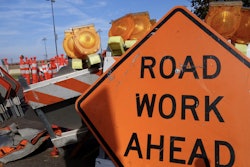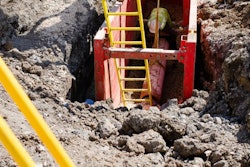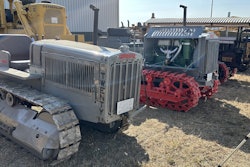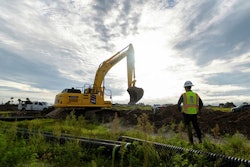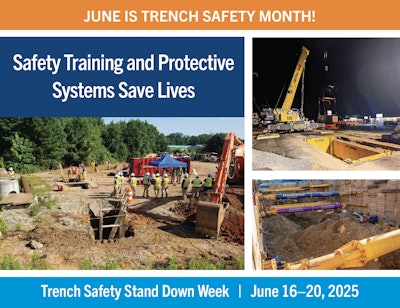
One cubic yard of dirt can weigh as much as 3,000 pounds, or as much as a small pickup truck, and when it’s caving in on a worker, it often leads to fatal crushing and suffocation.
There is often no time for a worker to react to these sudden collapses. The rescues – which often turn into body recovery missions – are difficult, painstaking and can take hours. Meanwhile, family, friends and coworkers face the heartbreaking frustration of helplessly watching and waiting.
As the construction industry heads into the Trench Safety Stand Down from June 16 to 20, at least eight workers have died in trench collapses so far this year – a stark reminder of the dangers of cave-ins.
Last year, 17 workers died in trench collapses, up slightly from 15 workers in 2023, according to U.S. Occupational Safety & Health Administration and media reports. That follows a record 39 deaths in 2022 and stepped-up enforcement by OSHA.
“These accidents can be avoided with thorough training in excavation safety procedures and techniques,” says the National Utility Contractors Association, which organizes the Trench Safety Stand Down.
Here’s how to participate in the Stand Down and tips on how to protect workers in trenches:
How to Stand Down
Last year, 24,198 employees participated in a Trench Safety Stand Down training event held by 507 companies on 2,143 jobsites, according to NUCA.
The Stand Down was first held in 2016 and involves safety training, educational seminars and live demonstrations of trench rescues. The event is sponsored by NUCA, OSHA, National Trench Safety, Sunstate Equipment Co.’s Trench Safety Rentals, and United Rentals.
The goal of the Stand Down is for employers to talk directly with workers about trench safety by taking a break during the day and holding a toolbox talk or other safety activity.
Participants receive a certificate of participation, as well as hardhat stickers from NUCA.
Those who want to participate can go to NUCA’s website where they will also find a variety of safety resources, including toolbox talks. You can also follow along on social media at #TrenchSafetyMonth and #TSSD25.
Why Workers Die in Trenches
The leading reason for OSHA trench violations is failure by the employer to provide adequate cave-in protection.
Other violations include:
- Failure to provide a ladder or other proper means of entering and exiting a trench.
- Placing spoil too close to a trench where rock and dirt could fall in on employees.
- Failure to provide daily inspections of excavations.
- Failure by the designated competent person on the jobsite to protect workers from potential cave-in.
- Hazards created by water accumulating in a trench.
Under OSHA regulations, all trenches and excavations 5 feet or deeper must have some form of cave-in protection. OSHA-approved protection systems are as follows:
- Shield trench walls by using trench boxes or other types of supports to prevent soil cave-ins.
- Slope or bench trench walls by cutting back the trench wall at an angle inclined away from the excavation.
- Shore trench walls by installing aluminum hydraulic or other types of supports to prevent soil movement.
- Trenches 20 feet or deeper must have protective systems designed by a registered professional engineer.
Trenches as shallow as 3 to 4 feet deep can also prove fatal, and they should be inspected by a competent person before entering. OSHA requires a jobsite to have a competent person designated to look out for hazards and keep workers safely from them.
Never Enter a Trench Without This
Along with cave-in protection, OSHA says a trench or excavation should never be entered unless the following conditions are met:
- It has some form of cave-in protection.
- It has been properly inspected by a competent person.
- There is a safe way to enter and exit trenches 4 feet or deeper, such as a ladder with its top at least 3 feet above the trench edge.
- Equipment and materials are at least 2 feet away from the edge.
- It is free of standing water and atmospheric hazards.
Always Do This
NUCA also offers the following safety tips:
- Locate all underground utilities before digging.
- The designated competent person on site should never go outside the area that has been sloped, shored or shielded, not even for a moment.
- Eliminate or control water accumulation before entering the trench.
- Stay alert when working in or near previously disturbed soil conditions.
- Do not permit vehicles near the edge of the trench.
- Check regularly for hazardous materials and oxygen levels in the trench.
- Never allow machines to run unattended.
- Use a ladder or ramp to get in and out of the trench. Place the ladder inside the protective system.
- Never climb on shoring or shields. Never ride in equipment buckets or on crane hooks.
- Wear hard hats when working in or around trenches.
- Stay out from under raised loads.






